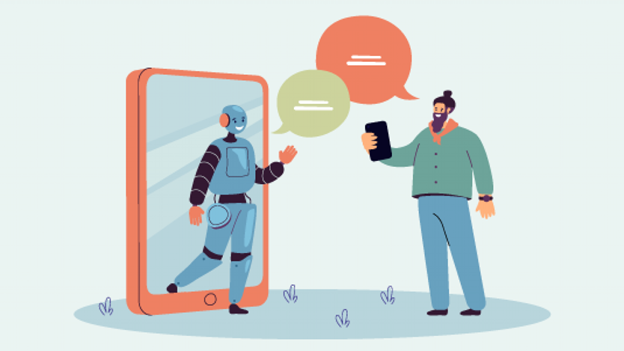The 5 Different Chatbot Types That Can Be Used to Automate Business Processes
The fundamental operations of a chatbot
Support
chatbots, which are still widely used, operate according to a set of
predetermined criteria. They identify keywords and retrieve from a database a
response that matches those keywords or phrasing patterns. A developer must
first create this database using distinct expressions or another type of string
analysis. As a result, the user's ability to communicate is limited to the
database alone, and to receive a response, the user must include at least one
keyword in their chats. The decision tree hierarchies of their forerunners, the
menu/button-based chatbots, were displayed to the user as buttons.
The most complex versions, such as the
chatbots for skills and support, use deep learning and sophisticated Natural
Language Processing (NLP) algorithms to comprehend interactions and get better
over time. These are intelligent bots that can record chat histories, evaluate
data, and make appropriate recommendations. They look for patterns in the data
and use them to solve related issues and ask relevant questions. The user can
utilize the Attachment Unit Interface (AUI) to ask the bot questions, which NLP
technology then converts into structured code. The "The bot doesn't
understand what I am saying" problem is fundamentally solved by NLP. The
target system is then used to execute the NLP-generated code to retrieve the
responses and finish the loop. Without human contact, chatbots may do tasks,
address issues, and manage information with this intelligence, abilities, and
help.
Entire processes can be automated.
Chatbots'
contribution to the business has significantly expanded as a result of the
widespread use of messengers, apps, and virtual assistants that emphasize the
value of communication. Chatbots will be integrated into more and more
procedures as their popularity grows, from boosting marketing campaigns and
enhancing consumer engagement to providing extra customer care options. Here
are the 5 different types of chatbots that companies across industries are
using to automate tasks.
• Help with FAQs & Site Navigation
You can make sure that clients receive clear
answers to their concerns and can quickly locate the material they're seeking by
implementing a chatbot to assist website visitors with navigation and answer
frequently asked questions. The purchase will happen faster if the search flow
is simplified by doing away with the necessity for search and filter buttons
and if there is less time spent researching the brand.
If clients need or want to learn more, the FAQ
chatbot can also provide a link to pertinent queries. It can also inform users
about new features, specials, and holiday greetings. In the event of complex
inquiries, you may also loop in human agents. Doing so eliminates a monotonous,
low-skill chore from your employees' to-do list while traffic is effectively
managed.
You need to feed in more than just the Q&A
information and navigational menus for such a chatbot to be implemented
successfully, whether standalone on your website or through a messaging app. To
escalate queries to an agent, these bots need to be trained with context,
follow-up inquiries, and situations. A famous example of automated site
navigation and FAQ bots is the employment of chatbots by firms like H&M,
Sephora, and Victoria's Secret in the beauty and fashion industries.
- Lead Generation
Chatbots
may automate the critical process of having discussions with potential clients,
spreading helpful information to them, and connecting with them frequently by
acting as virtual assistant
24/7. An automated lead-generating
chatbot may update, notify, and inform clients based on their choices,
attracting them back to your business. Both new and returning visitors benefit
from the prompts and triggers added to the purchasing path.
They reduce the
long-standing issues with customer hopping brought about by lengthy lead forms,
inaccurate data, and a lack of an immediate touchpoint. Advanced versions can
additionally prioritize leads to qualify them and seamlessly interact with top
CRM platforms to close deals. Brands like Yes Bank, NASSCOM, and Vodafone have
used chatbots to generate leads from advertisements and engage with prospects.
It functions as a comprehensive marketing solution, using nurturing workflows
for the target market and even providing marketing support. By doing
intelligent follow-ups, identifying fraudulent leads, and keeping you informed
of campaign developments, it enables you to enhance the marketing KPIs.
Original content:- The 5 Different Chatbot Types That Can Be Used to Automate Business Processes





Comments
Post a Comment